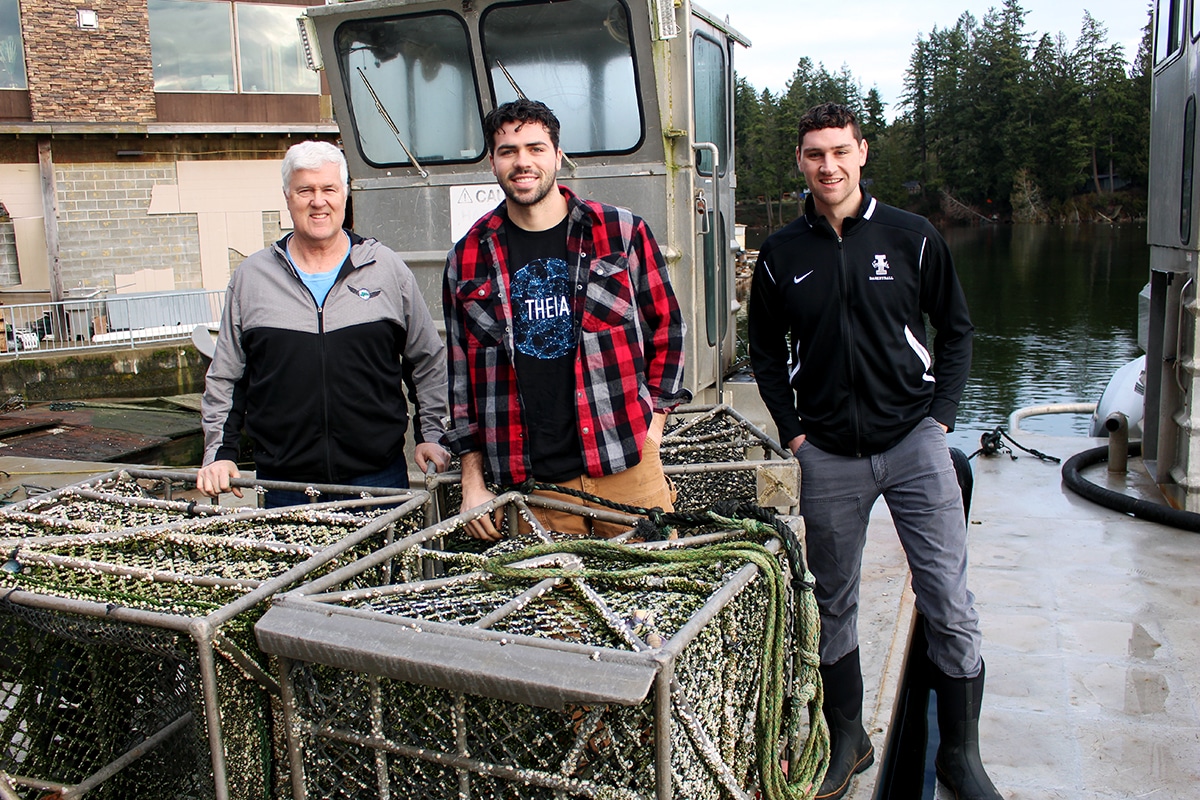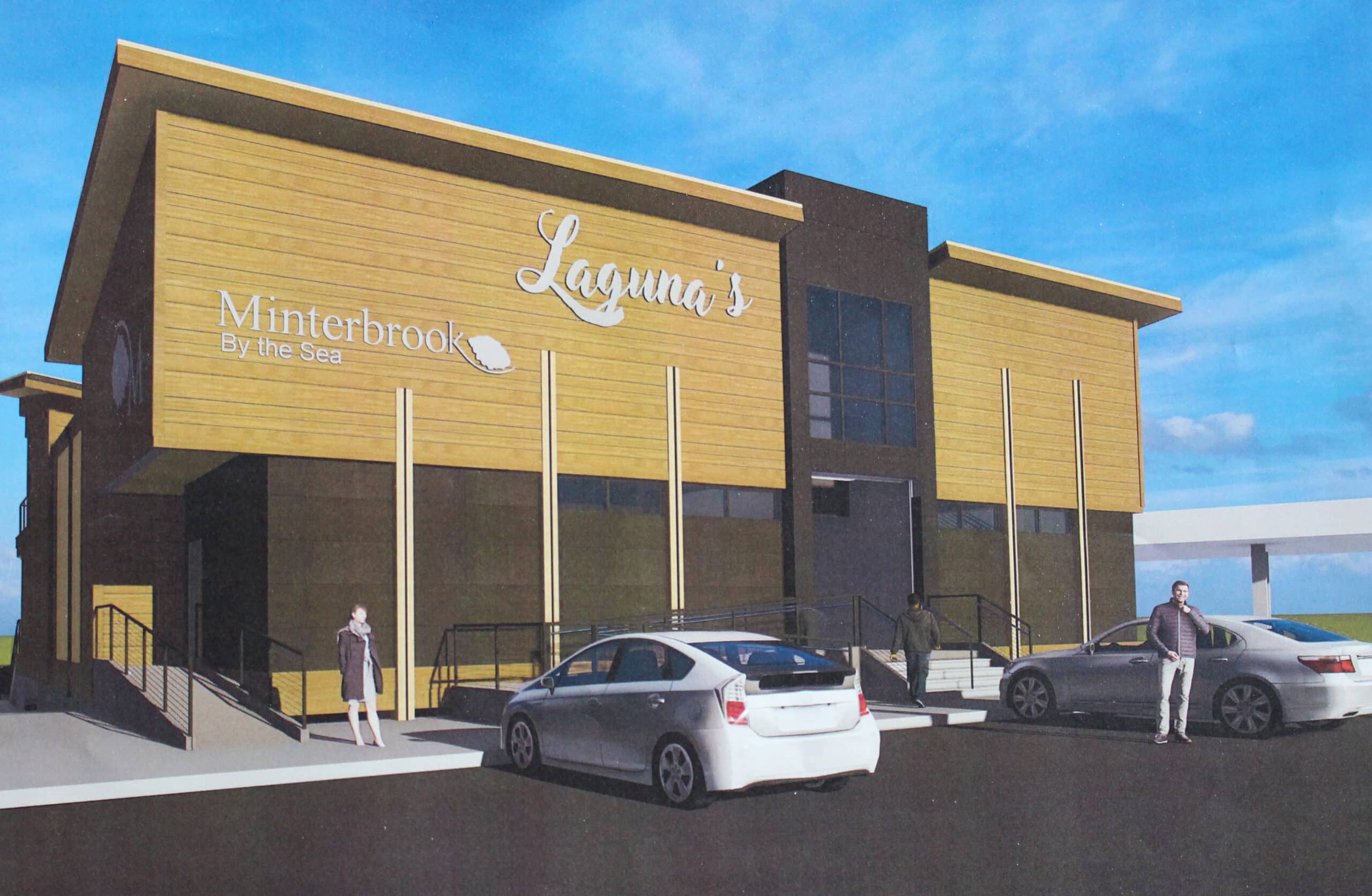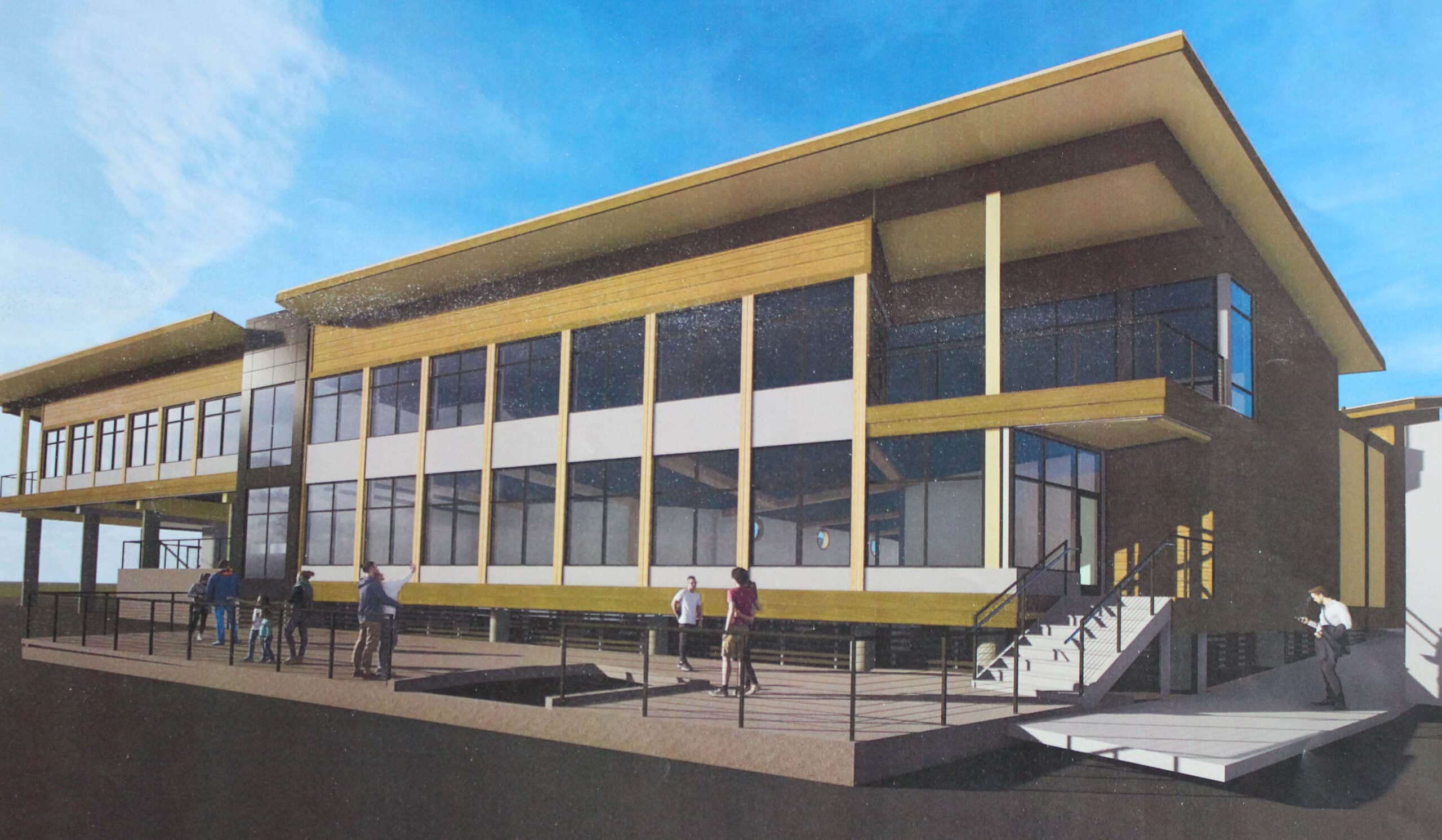Business Community
Minterbrook Oyster Company hopes Laguna’s will be a slam dunk with diners
In Purdy, sometime this spring, ground will be broken for Laguna’s. And soon after, patrons will break bread, shuck oysters and crack crab at an oyster house-style restaurant owned and operated as an extension of the Minterbrook Oyster Company.
Minterbrook plans to build the Peninsula-area’s newest restaurant near the Purdy Bridge on the former site of the Roland and Roland Real Estate offices. Lagunas will feature a walk-in seafood market and restaurant on the bottom floor and several office suites on the top floor.
“Yes. You will be able to get an oyster Po’ Boy sandwich,” said Kent Kingman, whose family has owned and operated Minterbrook Oyster Company since 2012.
Family venture
On the culinary front, Kingman says the neighboring Massimo Italian Bar and Grill often inspires his family. Side-by-side, seafood and Italian cuisine could catch on.
“That spot on the water just deserves a really nice seafood restaurant. We plan to make it a family environment, after all, we have kids.”

It’s a family venture: Kent Kingman, left, with sons Garrett, center, and Austin, right, look ahead to expanding Minterbrook Oyster Company into Laguna’s, a bayside oyster-bar in Purdy.
The Kingmans plan Laguna’s — Kent’s wife, Donna, came up with the name — as a family venture inspired by equal parts seafood and basketball.
Sons Austin, 26, and Garrett, 24, attended nearby Peninsula High School and played on the Seahawks’ highly successful teams between 2014 and 2016. After stints playing college hoops (Austin at Idaho and Eastern New Mexico; Garrett at Tacoma Community College and Hartford University), both settled in the Key Peninsula area.
Austin, along with fiancée Frida, is looking forward to operating the restaurant angle of the family venture. Garrett, along with finacée Marisa, will gravitate toward overseeing the Minterbrook oyster operation.
A test of patience
Kent Kingman says the project has been a test of patience.
After purchasing the property in 2013, putting Laguna’s in motion has resembled one of those 1,000-piece jigsaw puzzles. And not one of those easier landscapes that’s a kaleidoscope of crisp colors with stoic mountain cabins and 71 different animal species.
This puzzle is a balmy wash of blue sky, white puffy clouds, ultramarine blue water and sand … not unlike the view patrons will see of Henderson Bay and Burley Lagoon.

Looking west from the parking lot at Laguna’s.
The short story: Steeped with red tape and regulation, this puzzle included relocating electrical service lines below ground; adhering to strict health department regulations in an environmentally sensitive area; addressing traffic concerns; and designing a big old water tank on site for fire suppression. Not easy.
Construction may start next month
The long story: This project has taken a long time. If all goes well, construction may start sometime in March.
On site, Kingman says adjacent property owners Wayne Hogan (Massimo’s) and Alex Roland (Purdy 76 Station) have been extra helpful with the effort to get Laguna’s up and rolling.
“It’s complex, but we’ve just been patient,” said Kingman, who added the project now awaits a health department-required hydrogeology study … a final hurdle. “But it looks like we are very close to starting construction. Our target is to open the restaurant next spring. As soon as we get approval from the health department, things are going to go boom, boom, boom.”
From free throw lines to tide lines
Kent Kingman says his pathway into the seafood industry with Minterbrook Oyster Company — and now Lagunas — may have started on the basketball floor.
The sport has been a shared family passion. As a long-distance scoring specialist, Kent was a standout player at North Kitsap High School (class of 1978) who set a West Central District playoff record for points scored in a single game, 44 against Tyee High School. His tournament average of 38 points per game is also a record.
“I’ve heard if there had been a three-point line at that time, Dad’s record might have been bigger,” said Austin Kingman. “For Dad, it was all about the pull-up jumper.”
Kent Kingman says long-time Minterbrook Oyster Company owner/operators Harold and Beverly Wiksten inspired him to purchase the business in 2012. At the time, Kent’s career as a business culture transition specialist often had him on the road during the work week. Long-distance duties included taking the rudder on struggling businesses, redirecting the culture, tweaking things around, then handing off back to the business’ owners.
Along with wife Donna and brother Kelly, they coached Austin and Garrett’s basketball teams from third grade through middle school at Lighthouse Christian.
Closer to home
The thought of missing basketball games while his sons were in high school wasn’t an option.
“When the boys got into high school, I made a decision to do something else,” said Kingman. “I wanted to watch the boys play basketball. So, I decided I’d find a local business and do this one more time for our family, not for other people, but for us. I set out to find a company that would be a good fit for our family.”
Kingman says he had looked for a prospective business for a couple of years when Wiksten approached him about acquiring Minterbrook, a business fixture near the mouth of Minter Creek, where local ties run deep.
“I’m always amazed at how many people in the community have connections with this place,” said Kingman. Minterbrook has been in the oyster business since 1932. “People say ‘I used to work there,’ or ‘my mom used to work there.’ For a lot of years, the Wiksten family had a nice business that served the community very well.”
In the shell
After taking over Minterbrook, Kingman noticed a trend in the fresh oyster market. It was the bloom of the (raw) oyster-bar phase.

Looking east from the water at Laguna’s.
Historically, raw oysters had been the survival-chow of the shoreside poor. No more. Minterbrook’s model was to harvest oysters — which could only be hand-shucked —pack them into jars, then ship them all over the world.
The transition to selling oysters still-in-the-shell was challenging, but the operation was simplified. Fewer hands were needed on-deck to shuck oysters.
Kingman says Minterbrook ships most of its oysters overseas, or into larger-city markets. Minterbrook maintains a retail sales outlet on site.
“You want local oysters, you’ve got to come here to get them,” he says.
Laguna’s will certainly feature fresh Minterbrook oysters.
Oyster eating 101
Wine aficionados can sip and decipher Washington wines and tell you if a wine is from one of several AVAs (aka American Viticultural Areas) influenced by unique sun, soil and water conditions. Is this Cabernet from Walla Walla, Snipes Mountain or the Yakima Valley? They know.
Same holds true for fresh oysters. Likewise, a Willapa Valley oyster tastes different from a Quilcene oyster that tastes different from a Minterbrook oyster. The driver in the oyster game, Kingman says, is that each body of water has a unique algae that gives each oyster that certain je ne sais quoi.
Can you tell the difference?
“Yeah, I can tell the difference,” says Kingman, who admits he’d never eaten an oyster until after acquiring Minterbrook. “One day I was out on the boat and getting really hungry. One of the guys said, ‘just eat an oyster.’ Since then, I’ve come to love them.”
Oysters near and far
Will Laguna’s — named due its close proximity to Burley Lagoon — serve oysters from other regions so we locals can compare?
“Not sure.”
Vibriosis, caused by the Vibrio bacteria, is the kryptonite of the oyster game. You can get pretty sick from eating a tainted oyster and growers are constantly on guard for the bacteria.
An outbreak can send the entire industry into a tailspin. Kingman advises caution when consuming oysters from Mexico, though a warm water oyster grown along the U.S. Gulf Coast can be quite yummy. A Florida oyster fostered in far warmer water may be more briny than a Northwest oyster. That more-briny oyster can work well on the barbeque … same for a Po’ Boy sandwich.
Much like talkin’ grapes with a wine connoisseur, oyster aficionados are cut from the same cloth. One can learn a lot about oysters by chatting with Kent Kingman. Soon, local residents will have a chance to experience it for themselves.

